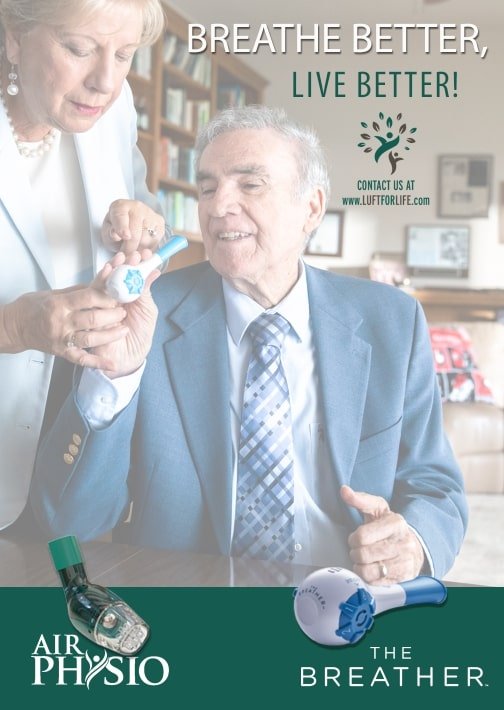REHABILITATION after COVID-19 – How RMT and OPEP can support a better and quicker recovery
REHABILITATION after COVID-19 – How RMT and OPEP can support a better and quicker recovery
As the COVID-19 pandemic has hit humankind unprepared and without precedence of a similar scale, clinicians and scientists are frantically searching for and debating the best ways to prevent, manage, and treat the heterogeneous disease caused by the SARS-CoV2 virus. While the focus is still on prevention and treatment of the early and acute stages, real-life evidence is accumulating that this is not where the debilitating effects of COVID-19 end. Many of the key symptoms, including breathlessness (dyspnea), fatigue, cough, and cardiopulmonary manifestations can linger for weeks or months after the acute stages.
Road To Rehabilitation
Rehabilitation of COVID survivors, which are fortunately the large majority of all infected people, is becoming a widely discussed topic, in order to support people return to the lives they were used to before the pandemic, to return to full functionality, return to work, and to a reasonable quality of life.
A recent publication from Sichuan University, China, investigated the effectiveness of rehabilitation of severely and critically ill COVID-19 patients. Thirteen patients who were admitted to the ICU received a rehabilitation program consisting of mobility exercises and pulmonary rehabilitation. As the patients presented with reduced respiratory muscle strength and impaired airway clearance, both respiratory muscle training (RTM) and oscillatory positive expiratory pressure (OPEP) was administered as soon as patients were able to breathe without mechanical support.
RMT AND OPEP Therapy Treatment
The combination of RMT and OPEP was hypothesized to increase respiratory muscle strength for reduced dyspnea, better ventilation, and increased exercise capacity, as well as to improve secretion clearance and pulmonary hygiene. OPEP therapy was recommended for 10 minutes, 3 times a day, with sets of 8 breaths and breaks in between. In addition, use of the OPEP device was encouraged as and when needed to facilitate sputum clearance. The RMT protocol consisted of 4 sets of 8 breaths, with 2 minute breaks between each set. The most effective intensity was established at 50% of maximum capacity, although higher intensities were not tested.
Results
Patients used this pulmonary rehabilitation combination daily until discharge. Compared to their baseline assessments at the beginning of the rehabilitation program, the patients saw an average increase in respiratory muscle strength of 21%, as well as an improvement in their peak expiratory flow rate, indicating a better cough effectiveness for improved airway clearance.
Therefore, this descriptive observational study showed that the combination of RMT and OPEP, together with elements of physical exercise and mobilization, had a beneficial effect on the pulmonary function of COVID-19 patients. The wider clinical impact of these findings does of course require confirmation in larger scale implementations. However, both RMT and OPEP are therapeutic methods that have undergone scientific scrutiny and have been established as safe, effective and cost-effective methods to improve pulmonary and cardiopulmonary function, pulmonary hygiene and airway patency. Application of these methods in sub-acute and post-acute COVID-19 patients is an obvious therapeutic approach to alleviate the prominent and burdensome symptoms resulting from the SARS-CoV2 respiratory pathogen.
Conclusion
According to this report, the large majority of COVID positive patients had impaired lung function, respiratory muscle strength and airway clearance function. THE RMT/OPEP combination improved these parameters. The authors of the study however noted that the patients still had reduced respiratory muscle strength and cough effectiveness at discharge.
While the values had improved with RMT/OPEP, they had not returned to predicted values in healthy adults in the time allowed. This highlights the damaging effects of COVID-19 on the lungs and airways, and points out the need for long-term rehabilitation with RMT and OPEP after COVID-19.
While these data are preliminary, they are encouraging as they provide clinicians and patients with a therapeutic approach that can improve the lives of people post COVID that could reduce the impact and burden of long term COVID-19 consequences.
Our Recommendation- The Breather and AirPhysio
Luft For Life specializes in pulmonary and cardiopulmonary health and wellbeing. The Breather, which is the original RMT device that is backed by 40 years of clinical experience, and the AirPhysio, Australia’s award winning OPEP device, are the flagships of Luft For Life’s product range.
The Breather provides strengthening of both inspiratory and the expiratory muscle groups, which makes it the perfect therapeutic partner of the AirPhysio, which provides effective oscillation for mobilization of secretion in the lungs for airway clearance. Combining these two devices may support a shorter recovery from COVID-19.

